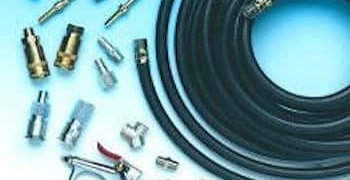 Painting against graffiti
Painting against graffiti
The phenomenon of graffiti has affected all urban and rural areas for the past thirty years. This urban art for some is synonymous with degradation for others. Neighborhoods and properties, which are regularly tagged, suffer the double penalty with the loss of real estate value, in addition to the bad image. We find, among protective paints, the few effective solutions to fight against this invasion of graffiti.
Anti-graffiti paints are coatings of the colored lacquer or clearcoat type, which come from the world of industry or even the automobile industry. They are neither more nor less than ultra hard and ultra resistant paints.
The surface layer of anti-graffiti paints or clearcoats resists both chemical attacks (especially ink solvents or cleaning product solvents), by preventing the penetration and fixation of pigments inside the paint.
Graffiti is mainly done with spray paint or markers. It is the latter that are the most aggressive and the most dangerous for paints.
Today, there is a choice between different protection products, in particular with new water-based versions, solvent-free, more pleasant to apply and which allow, among other things, the use and application in cages interior stairs, without diffusing harmful odors.
It is also now possible to tint it according to the color of your choice, which makes it possible to create a completely invisible protective coating.
The old protective paints were most of the time shiny and with a very limited range of color choices. Nowadays, high-performance products exist in both matte and satin.
Anti-graffiti paint
The application of an anti-graffiti coating does not mean the end of degradation problems for a property.
It simply means that an effective means has been put in place to quickly remove and combat graffiti : an area that is quickly cleared has been shown to discourage the perpetrators of this mischief. And on the contrary, areas that do not benefit from maintenance and cleaning, are quickly invaded by tags and graffiti.
We must therefore clean up as quickly as possible and this must be done quickly for another reason : the longer we wait, the more the paint on the tag will harden and become embedded in the paint. Clean quickly within 24 hours allows for easy and fast cleaning.
The cleaning of the anti-graffiti paint or clearcoat is done with a special product which is a solvent capable of dissolving the graffiti, without attacking the anti-graffiti paint.
The cleaning technique is simple : dip a brush in the cleaning product and brush the tagged area. Then leave to act for a few seconds, sometimes a few minutes, when the graffiti is thicker. Then, using a clean cloth, remove, pick up the melted graffiti.
Cleaning with high pressure water, and sometimes with high pressure hot water, is an even more effective technique , and can be used outdoors.
There are other solutions than anti-graffiti paints: these are temporary anti-graffiti varnishes. They are also called peelable clearcoats, because they are transparent, colorless and can be removed quickly and easily by simply pulling on them, or by spraying with hot water. These temporary protections are intended especially for heavily tagged areas.
Finally, and this comes from the experience of companies specializing in graffiti removal, the most effective is also the least expensive. It is also the easiest technique, which is simply to always have paint in the exact color of the wall that has been damaged and to cover the graffiti with one or two coats of paint. This gives a very clean and often invisible result, and sometimes much more visually pleasing than poorly cleaned areas.
 Other solutions for removing graffiti
Other solutions for removing graffiti
There is a sandblasting technique that was developed at an early stage suitable for the fight against graffiti and also against wild posting in cities.
This is called Hydrogumming. As sandblasting and the spraying of silica dust is prohibited, the technique has benefited from an innovation, in the form of the combined projection of sand and water. This technique is particularly effective on hard areas, such as bricks, concrete, wood...
Some motorway areas have found a different solution, which avoids any kind of cleaning and which effectively repels all the authors of graffiti : it is the installation of fences positioned about ten centimeters from the wall.
In Spain, it is customary to call on artists to create beautiful graffiti frescoes on the gates of their store or garage. This deters taggers from attacking beautifully decorated surfaces.
The problem of markers and inks
Different from the spray paints used to make graffiti, which settle on the surface of the walls and dry in the form of a film of dry paint, markers are much more dangerous tools for our walls. Composed mainly of solvents and very fine pigments, the markers make graffiti that deeply soak the paints, without being able to clean them.
In the case of this type of graffiti, if you want to cover with paint of the same color to cover and hide this graffiti, the solvent-based ink will come to the surface as many times as you try to cover it. The solution for this type of product is insulation with a special product called shellac. This product is commonly used by graffiti removal professionals.



















































































